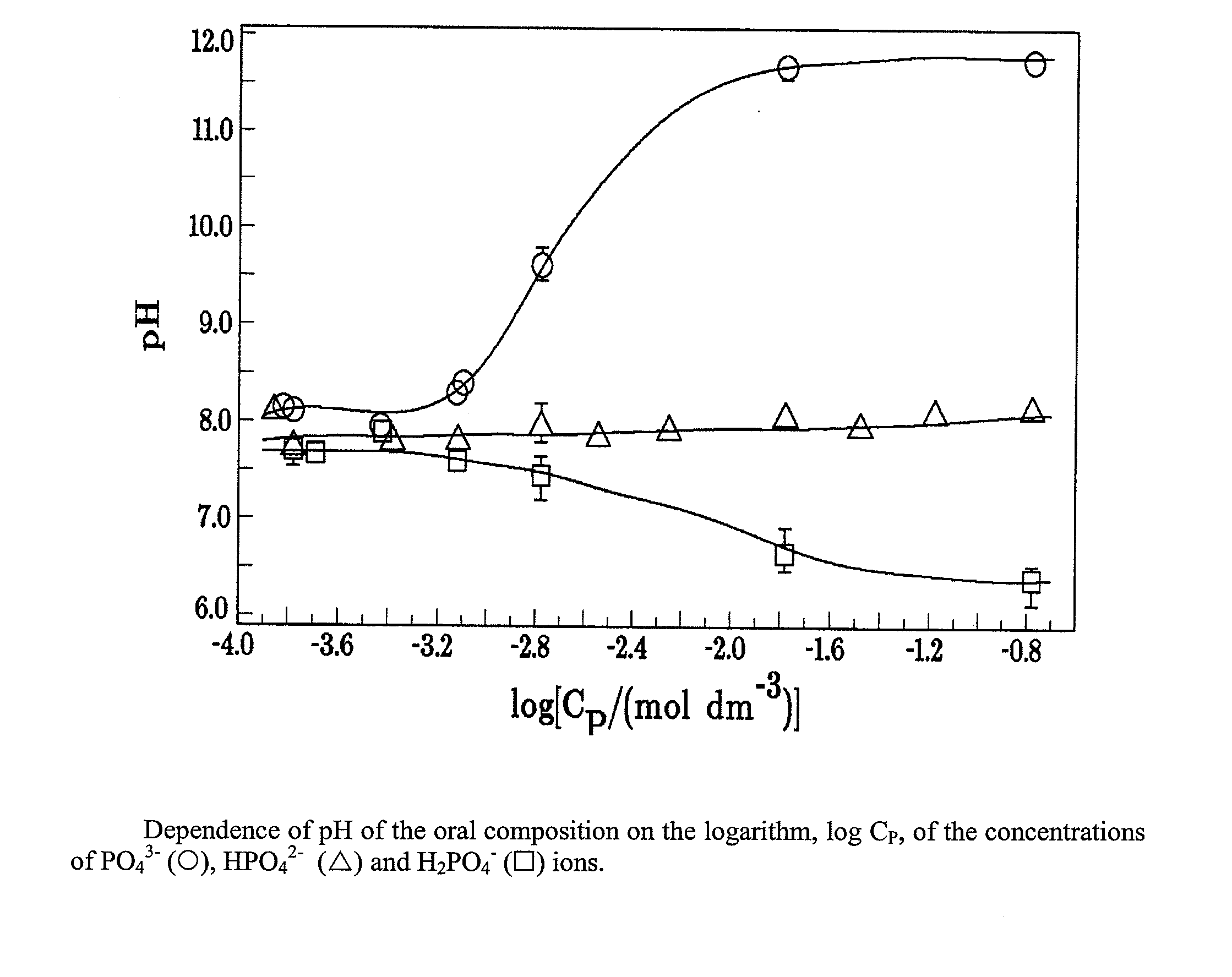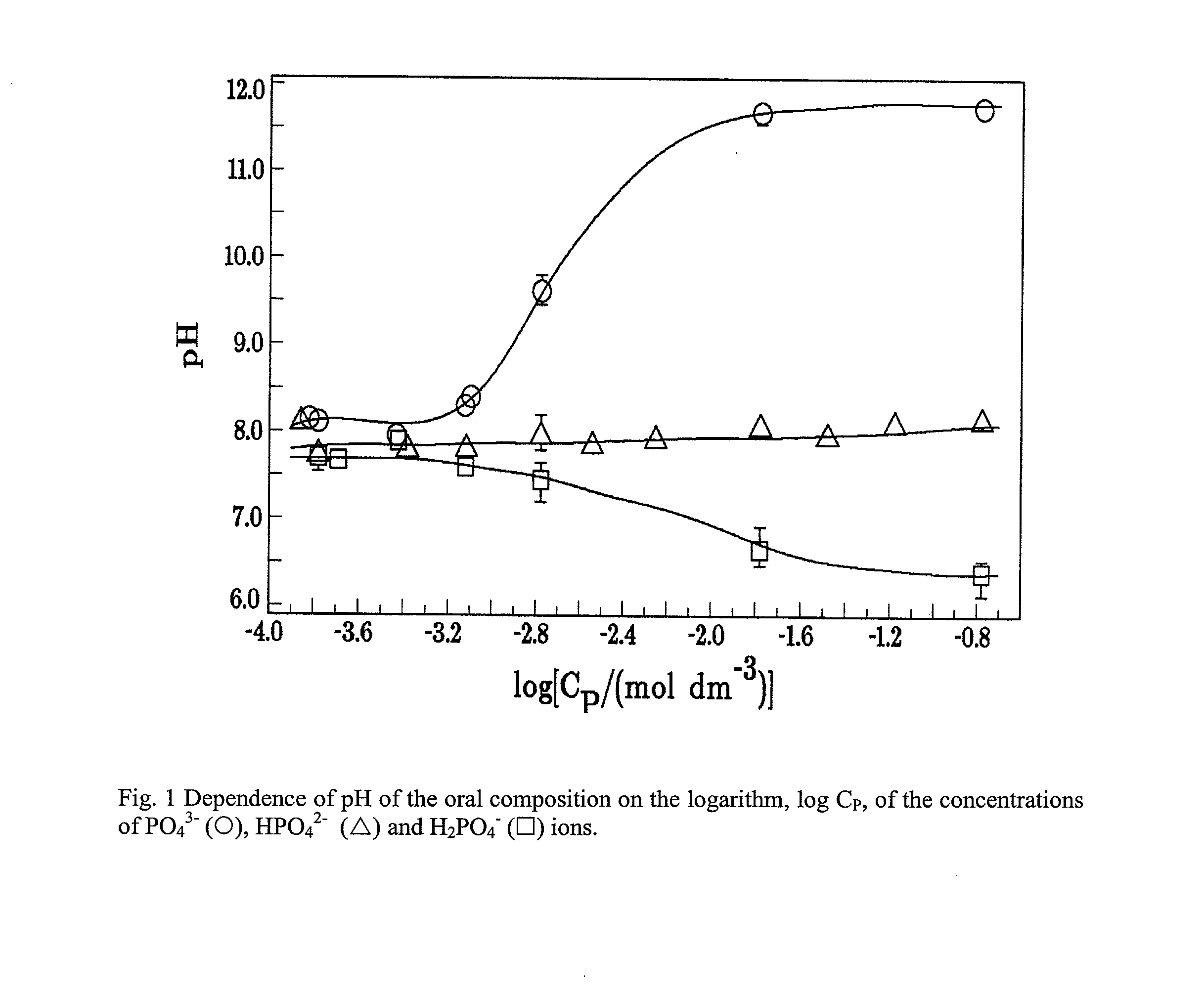Oral composition for stabilization, (RE)calcification and (RE)mineralization of tooth enamel and dentine
- Summary
- Abstract
- Description
- Claims
- Application Information
AI Technical Summary
Benefits of technology
Problems solved by technology
Method used
Image
Examples
example 1
[0091]Enamel matrix protein (EMP) is a component of mineralized tissues such as bone, dentin, cementum and calcified gristly. Enamel matrix protein is a significant component of the extracellular bone matrix and has been suggested to constitute approximately 8% of all non-collagenous proteins found in bone and cementum. Enamel matrix protein was originally isolated from the bovine cortical bone (powder) as a 23-kDa glycopeptide with high sialic acid content, as described in separate reports in Biochim. Biophys. Acta. 1965 101:327-35. Shortly modified protocol: Purification of enamel matrix protein isolated from bone powder was achieved by ion exchange chromatography on a DEAE-cellulose column. The eluting buffer for isolation of enamel matrix protein was 50 mM of sodium acetate containing 7 M urea and 0.5% (wt / vol) Triton X-100 at pH 6.0. After digestion of bone powder with 7 M urea overnight (o / n) aliquots of 10 ml was dialysis against PBS o / n and lyophilized. Powder was resuspende...
PUM
| Property | Measurement | Unit |
|---|---|---|
| Fraction | aaaaa | aaaaa |
| Molar ratio | aaaaa | aaaaa |
| Water solubility | aaaaa | aaaaa |
Abstract
Description
Claims
Application Information
 Login to View More
Login to View More - R&D
- Intellectual Property
- Life Sciences
- Materials
- Tech Scout
- Unparalleled Data Quality
- Higher Quality Content
- 60% Fewer Hallucinations
Browse by: Latest US Patents, China's latest patents, Technical Efficacy Thesaurus, Application Domain, Technology Topic, Popular Technical Reports.
© 2025 PatSnap. All rights reserved.Legal|Privacy policy|Modern Slavery Act Transparency Statement|Sitemap|About US| Contact US: help@patsnap.com



